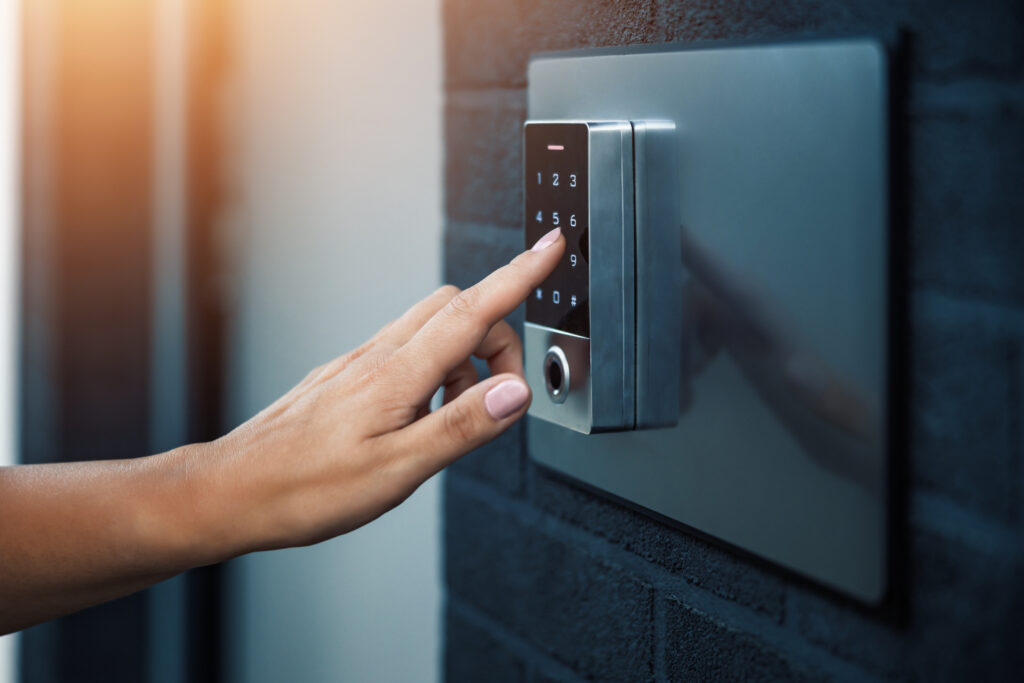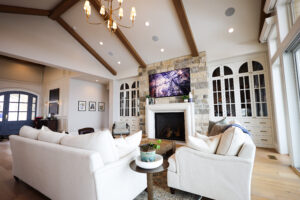When you think about keeping your home safe, your first thought might be locks, alarms, or even a big dog. But in today’s connected world, security goes far beyond the front door. Smart home security has opened up new ways to protect your family, your property, and even your peace of mind. The challenge is knowing which devices truly make you safer, and which ones just add clutter to your phone with yet another app and more notifications. If you’ve ever wondered whether a video doorbell is enough, if wired cameras are worth the investment, or how secure your Wi-Fi really is, you’re in the right place. This article breaks down everything you need to know about smart home security, from the most common risks to the strategies that actually work.
What Smart Home Security Really Means
Think of smart home security as a coordinated system that can see, think, and respond. You don’t just want a camera; you want cameras that talk to your locks, a doorbell that syncs with your lights, and a hub that knows the difference between a package drop-off and a real threat.
Practically, that means your system should prevent, detect, verify, and resolve with minimal noise. The best setups reduce false alerts, cut app fatigue, and surface only the events you care about.
The Building Blocks of Smart Home Security
We’ll start with essentials. They’re straightforward on paper, but real value comes from how they’re integrated together.
- Entry sensors & motion: Door/window contacts, motion, and glass-break sensors form the “alarm backbone.” Look for equipment that supervises devices and includes battery backup so your system keeps working during outages.
- Cameras & video doorbells: Modern platforms use object-level analytics to distinguish people, vehicles, and animals, so you get one meaningful alert instead of a flood of “motion detected” pings. Alarm.com’s Video Analytics is a representative example, complete with virtual zones and tripwires.
- Locks & garage: Smart locks and garage controllers connect access control to your alarm state. A simple, effective policy: auto-lock on arm-away, and disarm on authorized unlock, with alerts if anything’s left open.
- Professional vs. self-monitoring: With professional monitoring, dispatchers call you and engage responders when alarms qualify; self-monitoring sends alerts to you to act on. If you’re leaning pro, Alarm.com’s ecosystem routes signals over cellular with optional IP for dual-path reliability.
- The hub/panel: This is the brain. If you prefer a polished, pro-grade route, pair 2GIG security panels with Alarm.com for unified arming/disarming, automation, and video in one app.
When professional devices share context, your system can act, not just notify. If video analytics sees a person in a protected zone after sunset, trigger a Perimeter Scene, turn on floods, record a clip, lock the side door, and send a single, high-signal alert.
Niche Smart Home Security Measures
Here are low-key moves the pros rely on to raise the baseline without making your home feel like a bunker.
- Motorized shades as privacy control: Presence-based or time-based shades keep valuables out of sight.
- Lighting as deterrence: Use staggered, randomized “lived-in” scenes instead of a static 7:30 p.m. on/off.
- Network segmentation: Put cameras/IoT on their own SSID/VLAN to limit blast radius if a device is compromised.
- Router hardening: Enable WPA3 (or WPA2), disable WPS and remote admin, update firmware, and use long unique passwords + MFA where offered.
- Local + cloud video: Combine on-camera SD/NVR recording with cloud clips for redundancy and faster incident review. Alarm.com supports cloud clips and rules that tie video to automations.
Short story: lots of small, boring decisions add up to robust, quietly effective security.
How to Design A Secure Smart Home System
Good design starts with outcomes, not a shopping spree. Use this field-tested approach and adapt it to your property.
- Map risks and routines.
List entry points, blind spots, and daily patterns. Ask where you’d approach if you didn’t want to be seen. Decide what you need to know right now (person at back gate) vs. soon (package at noon). Keep outcomes front-and-center. - Choose your monitoring path early.
If you want professional dispatch and fewer maintenance headaches, pick a 2GIG + Alarm.com architecture from the start; you’ll get cellular signaling by default, app control, and clean escalation to responders when needed. Prefer DIY and handling alerts yourself? You can still use Alarm.com-compatible gear and plan cellular backup for the alarm path. - Prioritize wired-first video.
If it’s feasible, pull wires to primary camera locations. Wired cameras deliver higher reliability and dodge Wi-Fi congestion. Use Wi-Fi strategically for supplemental angles you can’t wire. - Place cameras with purpose.
Cover choke points (approaches to doors and gates), provide overwatch for the driveway, and add context views to see where subjects came from/went. - Harden access control.
Choose ANSI-grade smart locks that support auto-relock and pin schedules. Add a garage tilt sensor so you always know if the bay is open. Automate: when an authorized code unlocks the door, disarm the system and send a quiet “who arrived” notification. - Treat the network as a security device.
- Use WPA3/WPA2, disable WPS, and remote admin.
- Put IoT/cameras on a separate SSID/VLAN; keep laptops/phones on the private LAN.
- Update firmware quarterly and use unique passwords + MFA where supported. These steps mirror public FTC recommendations and small-business security guidance.
- Keep critical automations local to the panel or controller when possible.
Lighting scenes, lock rules, and alarm responses should still run even if your internet hiccups. Use the cloud for remote access, notifications, and advanced video features.
Maintain a one-page “playbook”: device names, SSIDs, admin accounts, where recordings live (NVR drive, SD cards, cloud), and how to arm/disarm if the internet is down. In an emergency, that sheet pays for itself.
Why Nice Home Automation Is The Ideal Security Hub
If you’ve ever juggled three apps just to check a doorbell clip and turn on lights, you know why the “hub” decision matters. Nice Home Management gives you one polished interface for security, access control, lighting, and audio/video without context-switching.
In practice, that means: arm/disarm, see who’s at the door, pop open the gate, review NVR footage, and adjust lights, all from one app and wall interfaces that your whole family can use. Nice’s current platform delivers that “single-pane-of-glass” experience across touch panels, remotes, and mobile.
From an integration standpoint, Nice excels at event-driven scenes. For example: When the system is armed-away after sunset, lower shades, turn off interior lights, enable perimeter floods at 20%, and lock all exterior doors. It feels cinematic, but it’s about real risk reduction and energy efficiency.
Many AIS clients use Nice for whole-home control and leverage Alarm.com for the monitored alarm/video layer; you get premium UI and deep automation on one side, and robust alarm transport and analytics on the other. It’s a best-of-both-worlds architecture that our team designs frequently.
Let AIS Give You the Peace of Mind You Deserve
Smart home security is more than a collection of gadgets. It’s about creating a system that works together to protect your home reliably, securely, and without adding unnecessary complexity. The strongest solutions combine well-placed cameras, reliable entry controls, thoughtful network design, and a platform that brings it all under one roof. With AIS, you get a wired-first, security-minded design and ongoing support. And with Nice Home Management, you can view cameras, play back NVR footage, answer your door, and manage security in one polished app, no juggling between brands or logins. Ready to secure your home the right way? Reach out to AIS or explore the budget calculator to get started.



